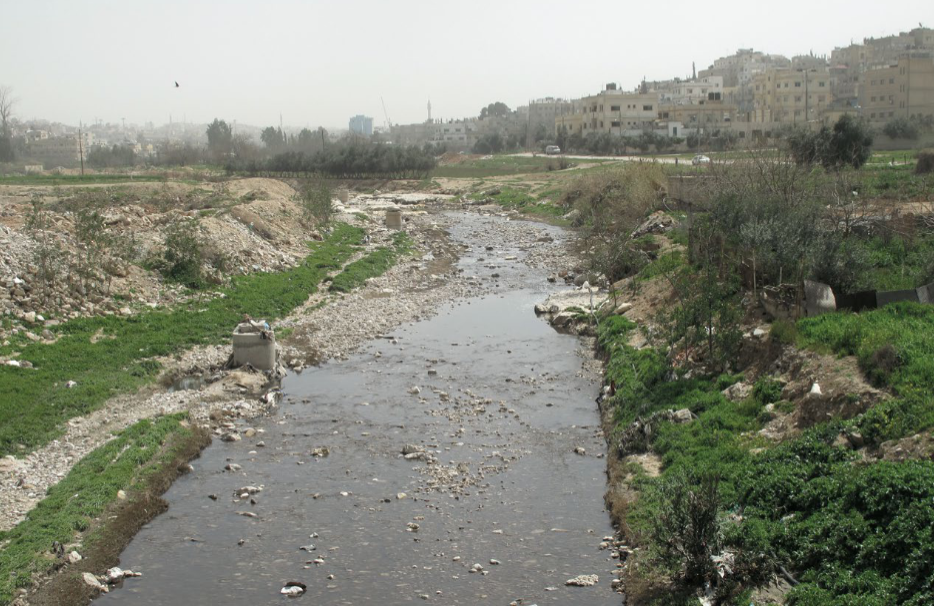Integrated water and drylands management in Jordan
Adaptation Options
Jordan is predominantly covered by drylands, with 80% of the country receiving an annual precipitation of about 100mm or less. It has a climate characterized by hot and dry summers with an average temperature of about 30°C and short and cool winters averaging around 13°C. The weather is humid from November to March and dry for the rest of the year, with hot, dry summers and cool winters during which practically all of the precipitation occurs. In general, the farther inland from the Mediterranean, the greater are the seasonal contrasts in temperature and the less the rainfall. Potential evaporation is high due to high temperatures in summer. Water demand increases dramatically as the temperature rises with the season, and accordingly illegal water abstractions become more widespread.
IWRM projects
Climate change, mismanagement and inherent water scarcity are the main drivers for IWRM projects in Jordan. Most of the interventions of the Water and Climate Change Programme of the West Asia Regional Office of IUCN are formulated to deal with IWRM in dryland situations. The main aim of these projects is to promote water use efficiency for both domestic and agriculture use, improve water governance, and minimize water losses as these can be as high as 45% for drinking water, in order to re-allocate water to nature. Water related projects should also be careful to at least not lead to overgrazing or overuse of available resources in order to avoid or minimize land or ecosystem degradation.
Within Jordan, there are also areas, mainly in the highlands, that are less dry and receive rainfall of about 350mm annually. In these areas, IUCN works with farmers to promote rainwater harvesting which is then used during the summer period for domestic and non-domestic use including livestock and supplementary irrigation for fruit trees. Rain water harvesting in these areas is carried out in two ways: either rain water is harvested and stored at the farm level or it is harvested and stored at the household level through capturing rooftop runoff in storage tanks and underground wells for domestic use. In the first scenario, water is stored within the soil profile. Techniques used on farms are aimed at maintaining soil moisture content through the summer period. Some of the techniques adopted include the use of stone terraces, fallow canals and mulching (i.e. spreading a protective layer of a material on top of the soil).
Impact
The main positive impact from current water projects is the increase in water use efficiency. In order to manage the impact of drought, however, there is a need for alternative income sources to avoid over reliance on livestock leading to overgrazing of the land cover. Lessons from other IUCN interventions in Jordan have demonstrated the value of integrating rangeland management and restoration in order to protect or restore the hydrological cycle. This is typically carried out through reviving Hima systems; the customary practice of protecting rangelands and other natural resources for sustainable use.
A national steering committee is formed at the beginning of any project in Jordan to ensure that the project work links and complies directly with national policy. The national steering committees normally include senior government officials from the Ministries concerned through whom policy recommendations are discussed at the highest levels. Along this vein, the West Asia Regional Office of IUCN in Jordan has participated in the revision and updating of the climate change and drylands strategy of Jordan in compliance with the UNCCD and the UNFCCC.
Despite these achievements there are still gaps in knowledge and policy. Most of these gaps relate to knowledge of all levels of water governance found in the country, knowledge of solutions available for water demand management and how to overcome their implementation challenges, knowledge for water managers to consider water environmental flows (i.e. water for nature) as well as general lack of information sharing, transparency and accountability. This affects ownership and the rights of the end users are also not clearly known to them.
The most important lesson on the effectiveness of the interventions in Jordan is the need for full participation by key stakeholders. Clear and systematic participation of all key stakeholders is key to involving them in dryland management such as through the Hima approach. Monitoring of project impact is being carried out by following up on availability of water, crop productivity and diversity of species through comparing the end results with the baseline status. This will ultimately provide stronger lessons.
Written by Mufleh Al Alaween, IUCN-ROWA. Sourced from Davies, J., Barchiesi, S., Ogali, C.J., Welling, R., Dalton, J., and P. Laban (2016). Water in drylands: Adapting to scarcity through integrated management. Gland, Switzerland: IUCN. 44pp




Trending Discussions
From around the site...
“Absolutely interested! I'll connect via email to discuss reviewing and enhancing the Economic Analysis of Climate...”
Adaptation-related events at COP28 (all available to follow/stream online)
“Please check out these adaptation-related events taking place at COP28 - all available online (some in person too if...”
Shining a light for biodiversity – four perspectives to the life that sustains us. Four hybrid sessions.
“30 November to 19 December 2023 - Four Sessions Introduction The SDC Cluster Green is happy to invite you to the...”